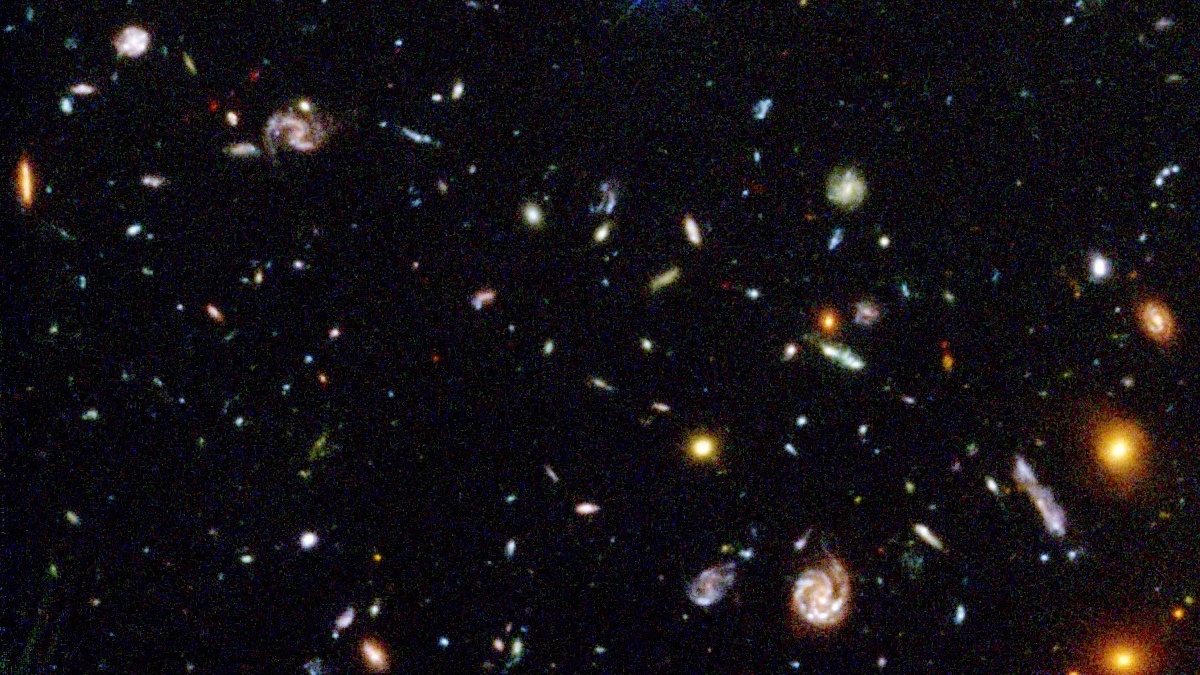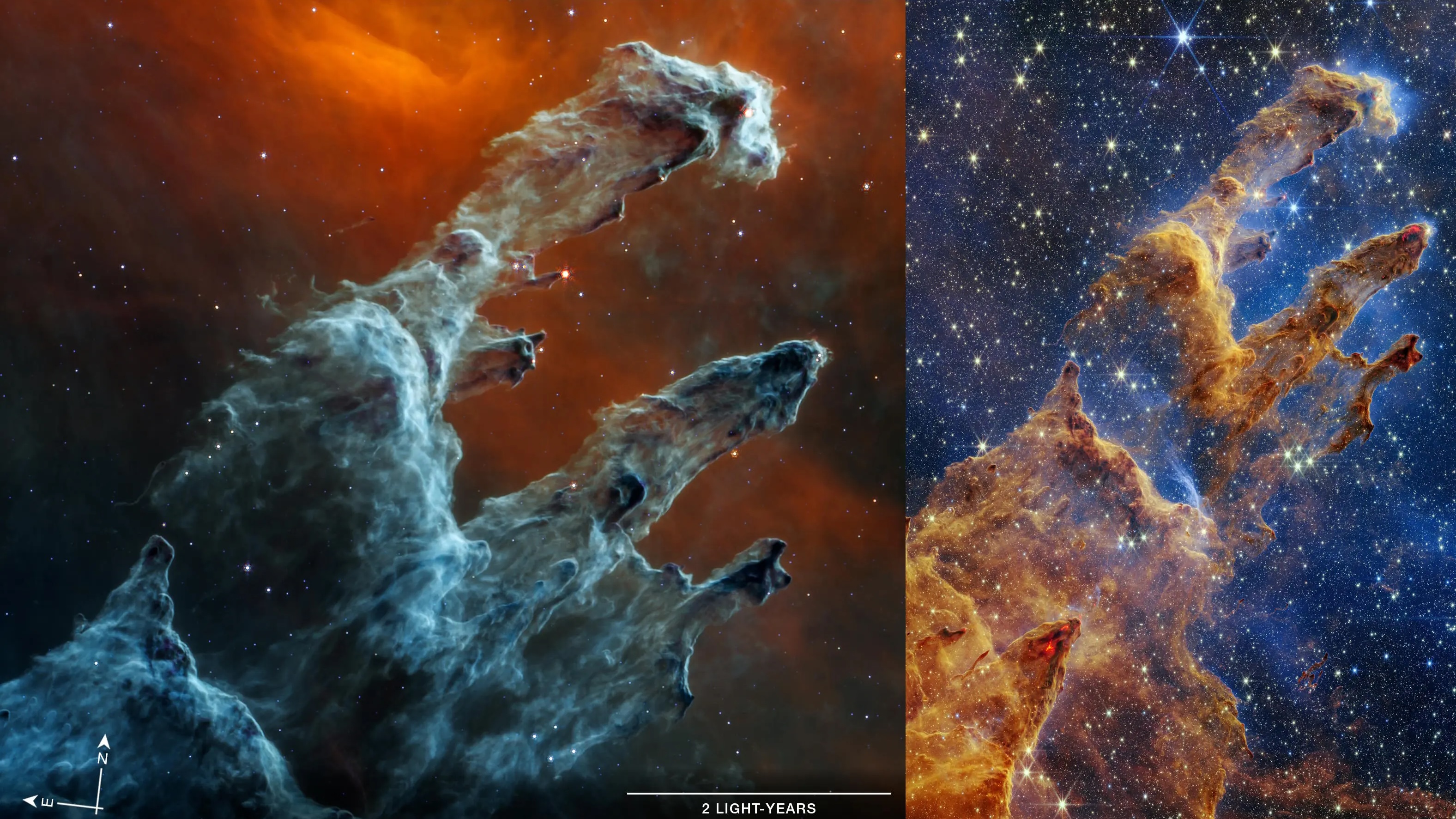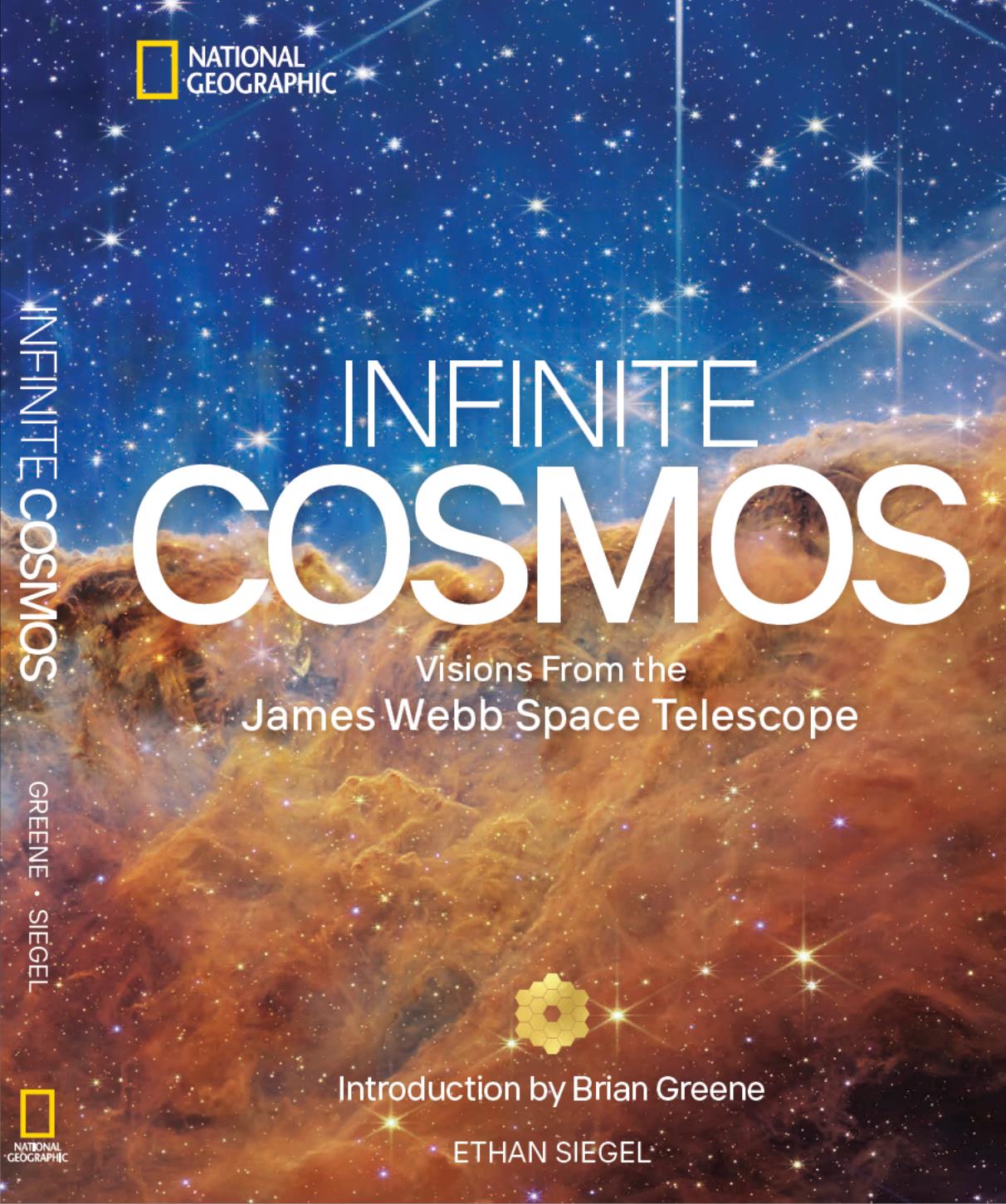Beyond Human Vision
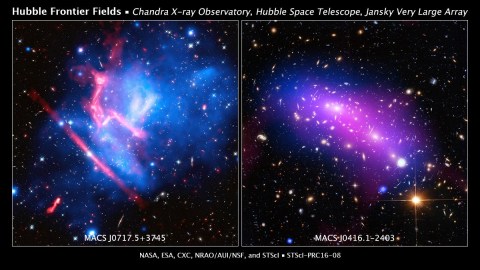
How colliding galaxy clusters emit the most spectacular fireworks, if only you look beyond what your eyes can see!
“Every single time you make a merger, somebody is losing his identity. And saying something different is just rubbish.” –Carlos Ghosn
By collecting huge amounts of light from space, the Hubble Space Telescope discovers and images the Universe’s most massive, distant galaxy clusters.
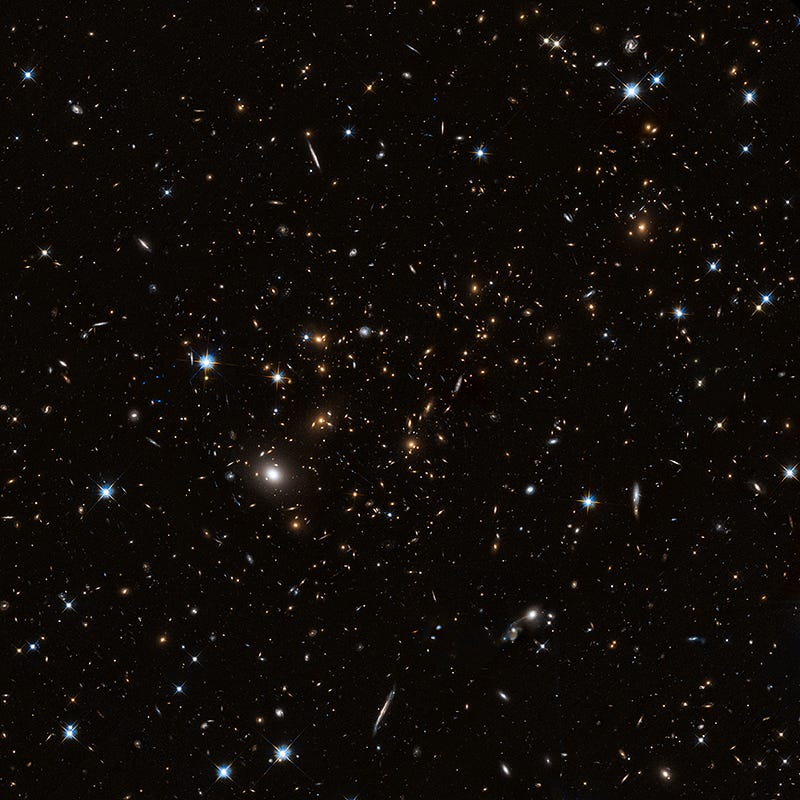
Yet there’s more to these objects than merely stars, as revealed by visible light.
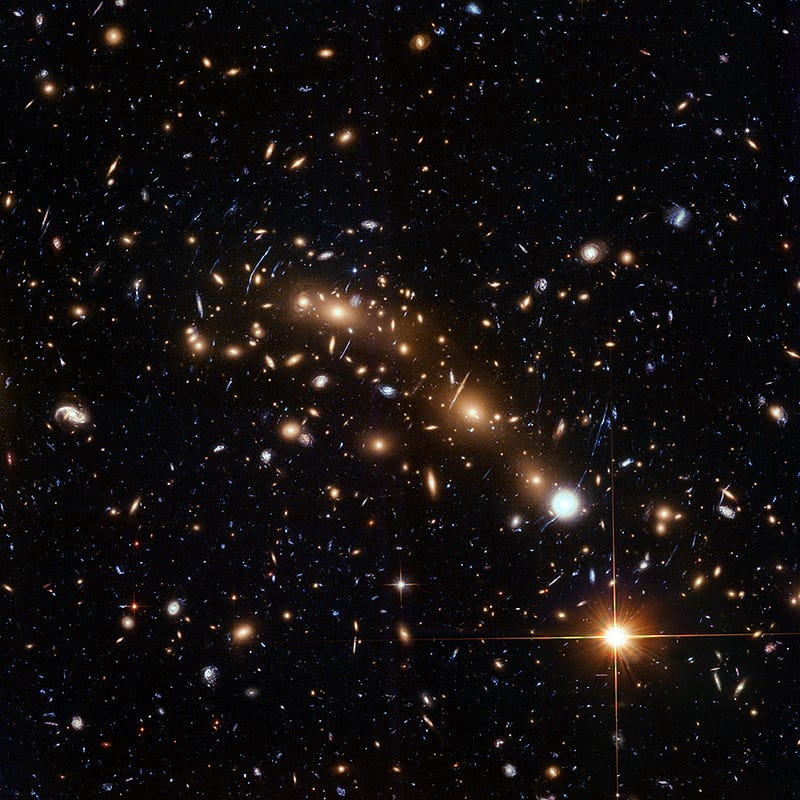
At the high-end of the energy spectrum, X-rays, as imaged by NASA'sChandra observatory, reveal superheated gas and plasma.
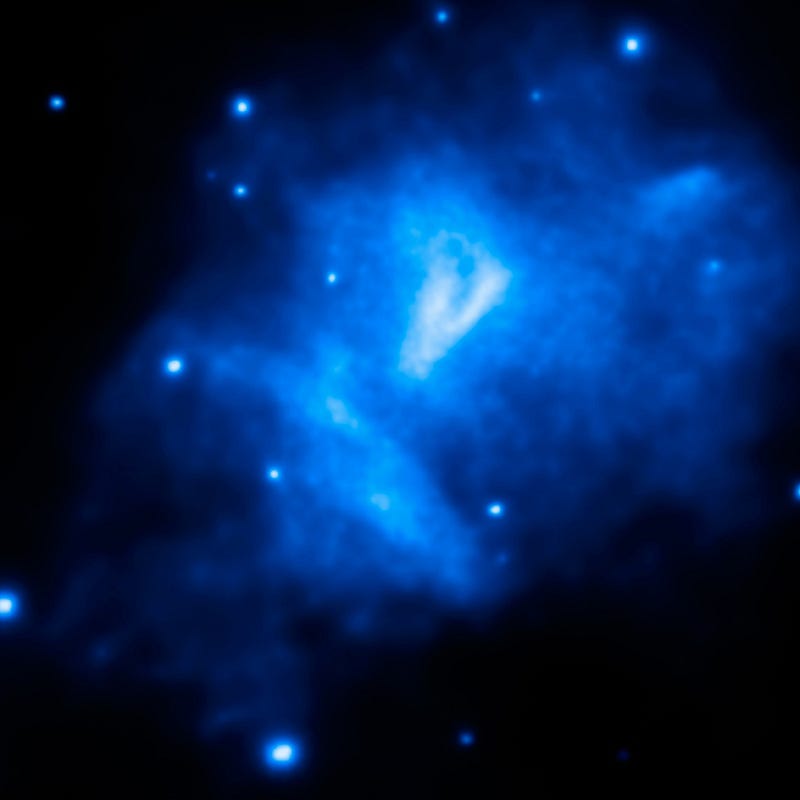
When extremely high-velocity gas clouds collide, the density and temperature both spike, resulting in the emission of energetic X-rays.
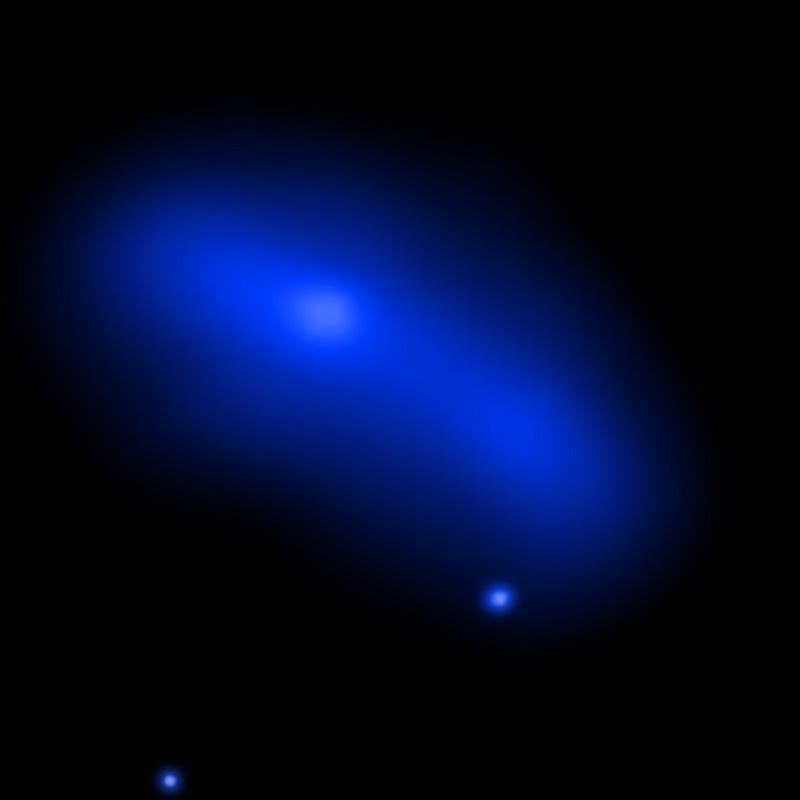
At the other end of the spectrum, low-energy emissions appear in the radio, as revealed by the Very Large Array here on Earth.
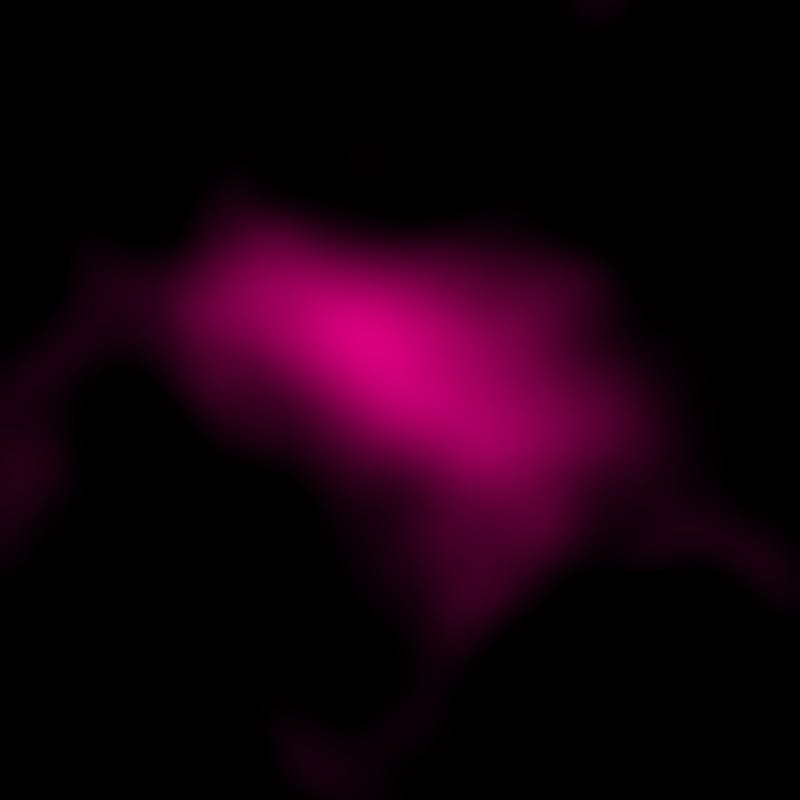
While cluster MACS J0416.1–2403 (above, in the radio) showcases a simple collision in the early stages between two large galaxy clusters, MACS J0717.5+3745 (below) is much more complicated.
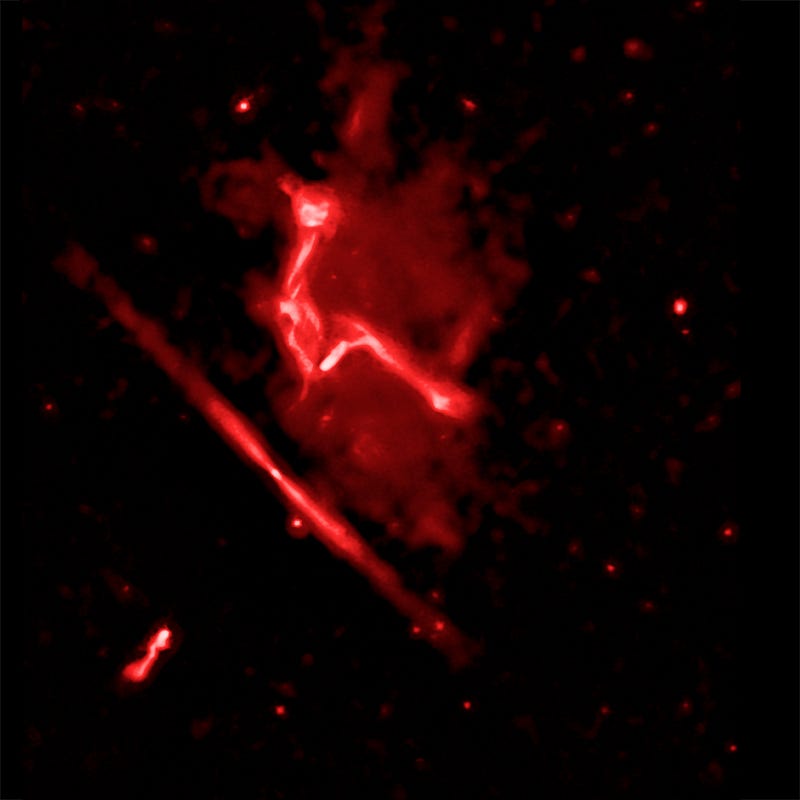
With a total of four identified galaxy clusters colliding at once, this is one of the largest cosmic trainwrecks ever discovered.
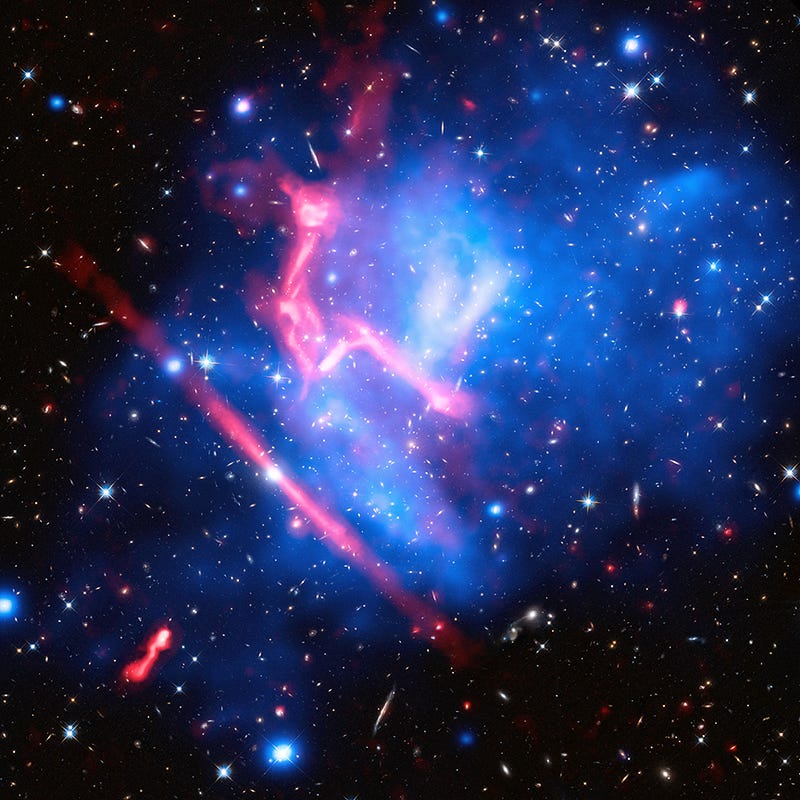
By combining observations from all three wavelengths, astronomers can better understand matter’s evolution and distribution.
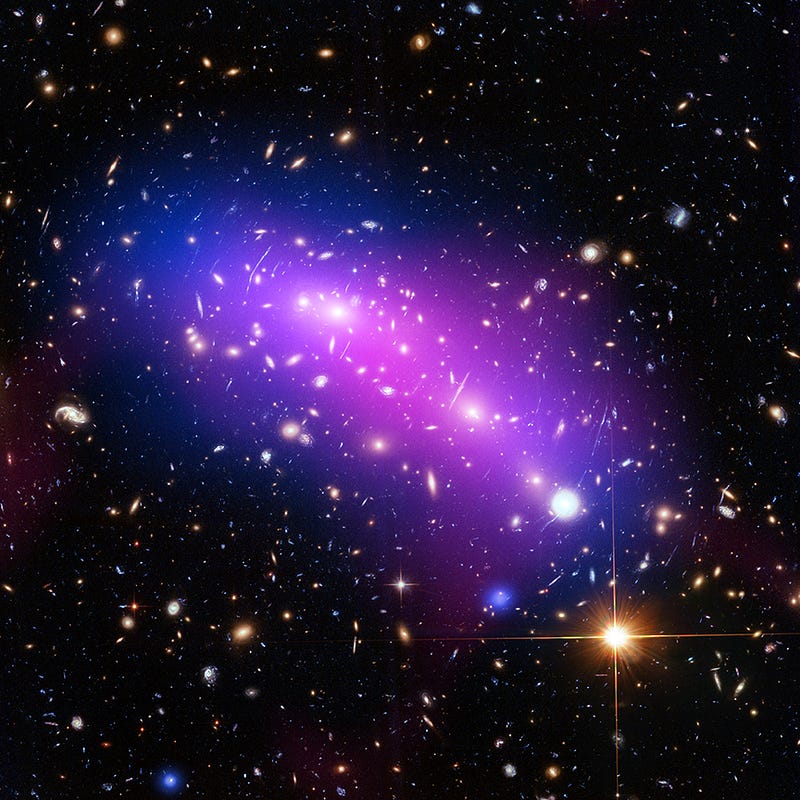
The final step will be to introduce gravitational lensing data.

By mapping starlight, X-rays, radio waves and mass, we’ll better comprehend how the largest structures grew and evolved in the Universe.
Mostly Mute Monday tells the story of a single astronomical phenomenon or object in pictures and other visuals, with no more than 200 words of text.
This post first appeared at Forbes. Leave your comments on our forum, check out our first book: Beyond The Galaxy, and support our Patreon campaign!
